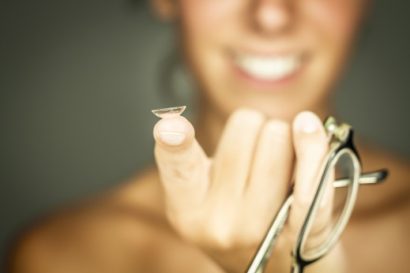What’s the Real Cost of LASIK vs. Contact Lenses?
Written by Dr. David Evans Last modified on April 22, 2019

Price is always an issue when considering any kind of elective surgery and LASIK is no exception. Consumers spend about $30 Billion a year on eye care products, much of it spent recurrently on contact lenses, glasses and related solutions. A common concern I hear from contact lens wearers about LASIK surgery is the cost. But this cost must be kept in perspective. Since LASIK is a permanent procedure with a one-time fee and contact lenses and solutions incur ongoing costs, how does the cost for LASIK truly compare to the cost of contact lenses when evaluated over a number of years?
With the average cost of LASIK estimated to be $4,500 for both eyes, the most conservative estimates suggest that contact lenses become more expensive than LASIK after 10 years; assuming that consumers strictly follow doctor instructions and only wear contact lenses for a 30-day period before disposal. But most consumers — myself included — wear the disposable lenses for longer time periods before discarding them. Given this scenario, it is generally agreed that contacts become more expensive after 20 years rather than 10. IE, a 25-year old contact lens patient who has LASIK will be 45 years old when LASIK will technically become less expensive than contact lenses.
So does LASIK surgery cost more than contact lenses? The answer is there is no clear cut answer.
But, I think this type of cost-centric analysis misses the point. LASIK has many lifestyle benefits that should be the focus of the decision to have LASIK; not whether you can save money 20 years down the road. It is best to discuss your specific eye care situation with a LASIK surgeon and then make a decision if it’s right for you. Once you have decided on the procedure, I think then it’s appropriate to weigh the cost analysis versus your current eye care expenses. For example, should you pay in full up front? Should you finance the procedure through the practice? Should you pay for the procedure on a credit card? Should you use your FSA? Can you really afford the procedure? Etc. Besides, keep in mind the example of the 25-year old mentioned earlier. By the time he or she turns 45, reading glasses or multifocal contact lenses may be needed anyway for near vision. So, the eye care costs start all over again, even with LASIK.




